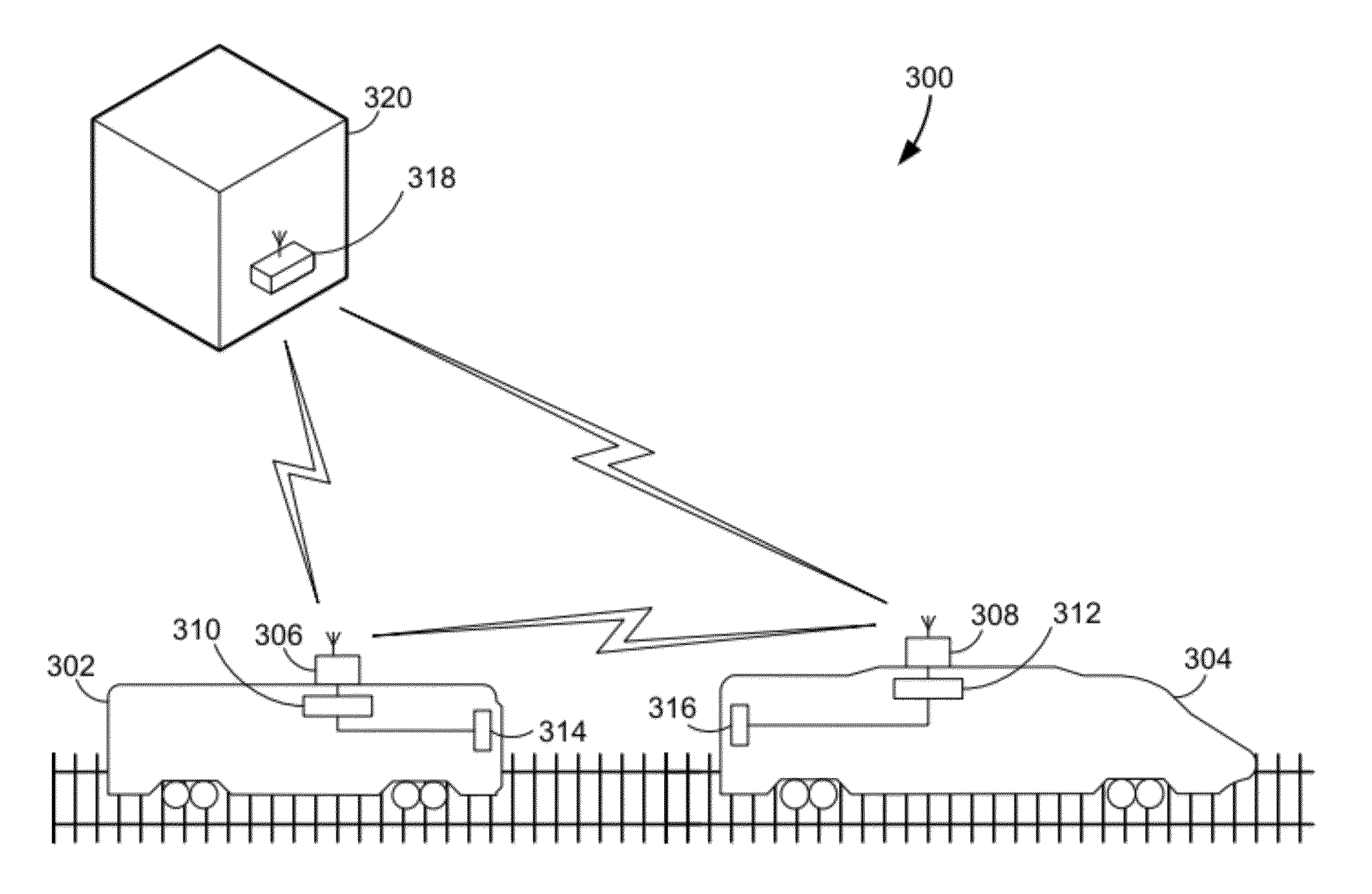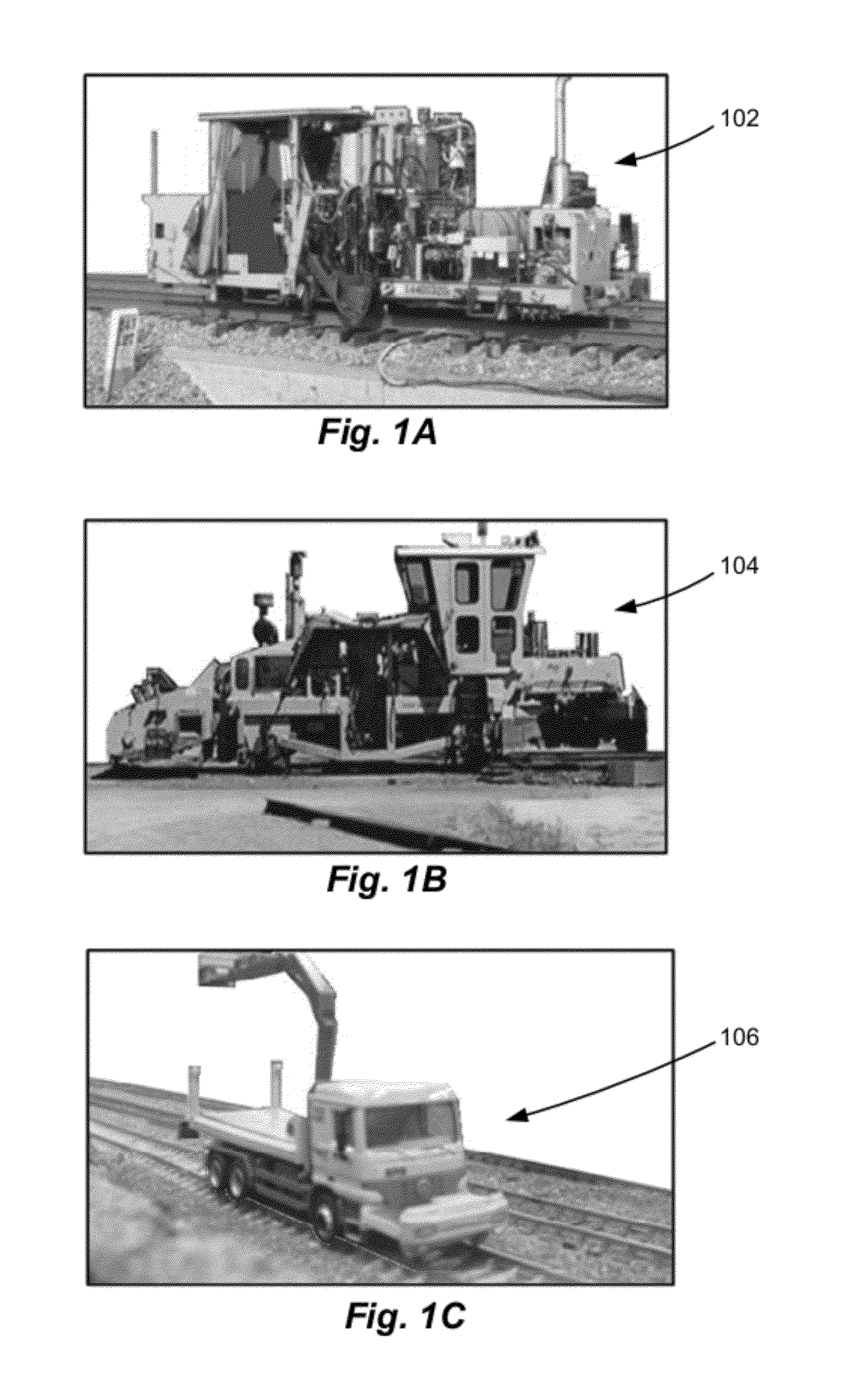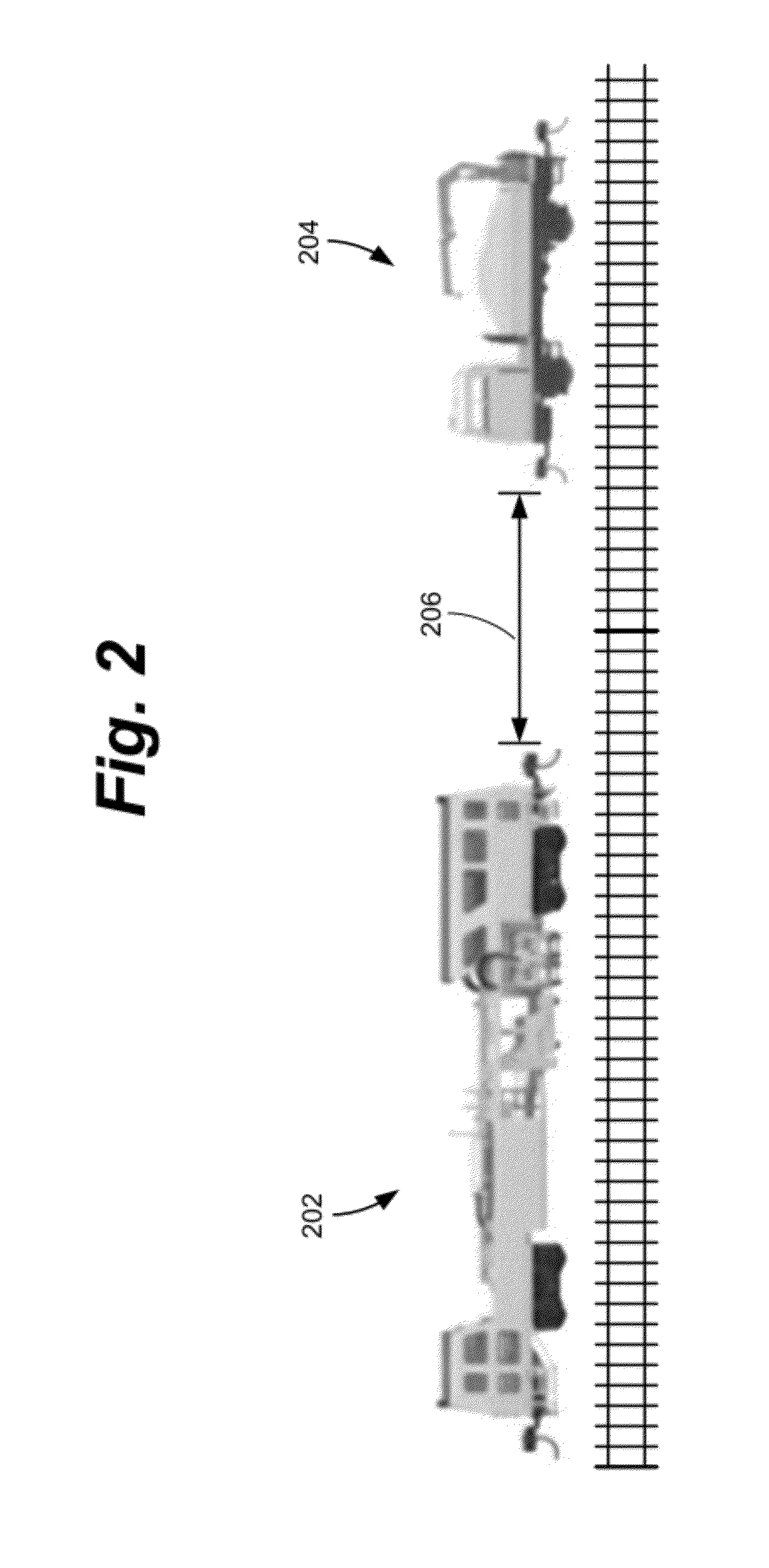Collision avoidance system for rail line vehicles
- Summary
- Abstract
- Description
- Claims
- Application Information
AI Technical Summary
Benefits of technology
Problems solved by technology
Method used
Image
Examples
Embodiment Construction
[0023]Previous systems for preventing collisions of rail line vehicles have typically utilized a single sensor, for example a GPS or radar-based sensor, to monitor the approximate location of rail mounted vehicles. A shortcoming of single sensor systems, such as ones that depend on GPS sensors, is that the rail vehicles being monitored often enter into “blackout” areas (for example, around buildings, in the mountains, canyons, around sharp curves or in tunnels) where the single sensor may be unable to accurately determine the vehicle's location. For example, a GPS sensor may be unable to communicate with satellites when the vehicle is in a tunnel. Some previous systems attempted to solve this problem by performing a simple “dead reckoning” calculation, where the last known speed and direction of the vehicle are used to estimate the current position of the vehicle until the sensor signal is reestablished. This estimation calculation may not be precise enough to prevent collisions in ...
PUM
 Login to View More
Login to View More Abstract
Description
Claims
Application Information
 Login to View More
Login to View More - R&D
- Intellectual Property
- Life Sciences
- Materials
- Tech Scout
- Unparalleled Data Quality
- Higher Quality Content
- 60% Fewer Hallucinations
Browse by: Latest US Patents, China's latest patents, Technical Efficacy Thesaurus, Application Domain, Technology Topic, Popular Technical Reports.
© 2025 PatSnap. All rights reserved.Legal|Privacy policy|Modern Slavery Act Transparency Statement|Sitemap|About US| Contact US: help@patsnap.com



